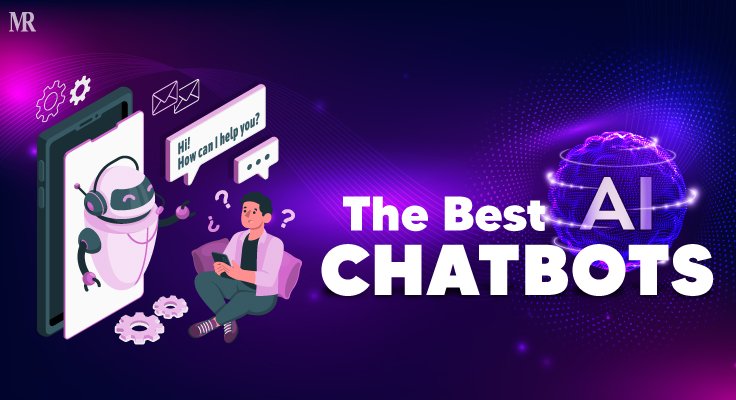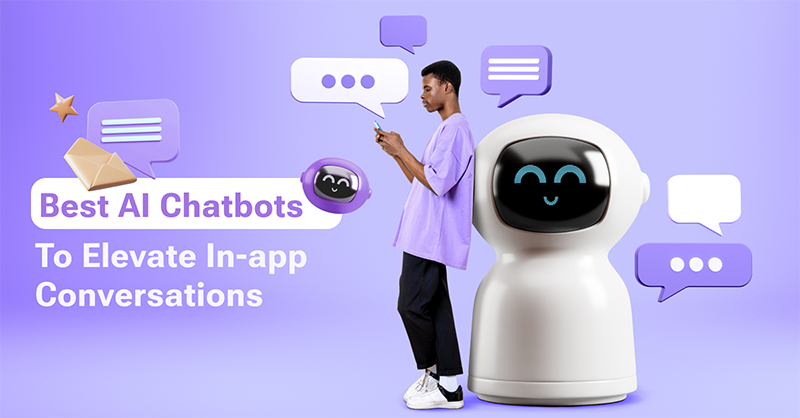A Comprehensive Guide to the Top 10 AI Chatbots for 2024
A Comprehensive Guide to the Top 10 AI Chatbots for 2024
Blog Article
Boost Involvement and Effectiveness Utilizing AI Chatbots
As companies progressively seek innovative solutions to improve functional efficiency and customer involvement, AI chatbots emerge as a pivotal device in this change. The execution of AI chatbots is not without its challenges and nuances.
Understanding AI Chatbots
AI chatbots have actually transformed the way companies connect with their clients, offering 24/7 support and interaction at scale. These sophisticated software application applications use all-natural language processing (NLP) and equipment knowing algorithms to replicate human conversations, making them capable of understanding and replying to individual queries in real time.
The architecture of AI chatbots normally consists of a user interface, a backend handling system, and a data base. The interface enables customers to input questions through message or voice, while the backend processes these inputs, using NLP to decode intent and context. The data base is a database of details that the chatbot can draw from to provide accurate feedbacks.
AI chatbots can be classified into two main classifications: rule-based and AI-driven. Rule-based chatbots follow predefined scripts and are restricted in their conversational capabilities, while AI-driven chatbots take advantage of maker learning to boost their interactions over time, enabling them to handle extra complex questions.
Integrating AI chatbots right into consumer solution strategies not only boosts functional effectiveness yet also cultivates improved consumer experiences through punctual and tailored communications.
Benefits of AI Chatbots
The combination of chatbots right into client service structures offers numerous advantages that can significantly enhance organizational performance. One of the key benefits is the capacity to offer 24/7 assistance, ensuring that client questions are attended to promptly, regardless of time zones or functioning hours. This continuous availability fosters a greater level of consumer contentment and retention.
In addition, AI chatbots enhance operations by automating recurring tasks and handling a large volume of queries all at once. This performance not only decreases the workload on human agents but likewise allows them to concentrate on more complex issues that call for an individual touch. Subsequently, organizations can achieve better resource allowance and enhanced productivity.
Additionally, chatbots can evaluate client communications and gather beneficial information, making it possible for services to get understandings into client preferences and actions. This info can educate advertising techniques, product advancement, and total service improvement.
Executing AI Chatbots Effectively
Successfully carrying out AI chatbots needs cautious planning and approach. Organizations must initially identify particular goals for the chatbot, such as enhancing customer support, improving operations, or providing instantaneous support. A detailed understanding of the target audience is crucial, making it possible for organizations to customize the chatbot's tone, language, and performance to satisfy individual expectations.
Following, picking the right system and modern technology is important. Organizations must evaluate different chatbot structures, thinking about aspects such as integration capabilities, scalability, and ease of usage. top 10 ai chatbots. In addition, making sure that the chatbot can flawlessly integrate with existing systems will certainly boost total performance
Creating an instinctive individual experience is crucial for efficient engagement. This consists of creating conversational flows that expect user demands and offering clear motivates for interaction. Regularly updating the chatbot's data base and incorporating responses systems will better improve its performance.

Measuring Engagement and Performance
Evaluating the efficiency of AI chatbots is essential for understanding their effect on engagement and operational effectiveness. Organizations has to develop vital performance indicators (KPIs) customized to their particular purposes. Typical metrics consist of customer interaction prices, reaction times, and resolution rates, which collectively provide understanding into exactly how well the chatbot fulfills user demands.
Engagement can be use this link determined through metrics such as customer retention, the frequency of interactions, and comments scores. Evaluating conversation logs can reveal patterns in customer questions and identify areas for renovation. Furthermore, assessing individual fulfillment through surveys can supply qualitative understandings into the chatbot's performance.
On the operational efficiency front, metrics like the decrease in human representative work and the typical expense per communication can highlight the chatbot's payment to resource optimization. Moreover, tracking the moment taken to solve queries can aid identify traffic jams while doing so.
Frequently examining these metrics permits companies to make data-driven decisions, enhancing chatbot functionality and customer experience. By constantly determining engagement and performance, organizations can adapt their approaches to make the most of the advantages of AI chatbots, guaranteeing they remain a beneficial asset in client communications.
Future Trends in AI Chatbots

One more trend is the incorporation of artificial intelligence formulas that enable chatbots to pick up from past interactions and click reference continuously boost their responses. This adaptive understanding procedure will allow chatbots to take care of intricate inquiries and provide tailored remedies in time.
Moreover, the increase of multichannel release will certainly see chatbots operating effortlessly across various systems, such as social media, web sites, and mobile applications. This omnichannel existence ensures that companies can engage clients wherever they are, boosting availability and user experience.
Finally, a concentrate on ethical AI principles will certainly shape the advancement of chatbots, stressing openness, information privacy, and prejudice reduction. As these patterns create, companies can expect AI chatbots to end up being even extra indispensable to their interaction and performance strategies, driving significant renovations in consumer interaction and functional efficiency.
Final Thought
In verdict, AI chatbots represent a transformative pressure in improving engagement and efficiency within numerous fields. As innovation proceeds go to website to evolve, the potential for AI chatbots to drive organization outcomes and streamline procedures will just boost, forming the future of customer solution.
Report this page